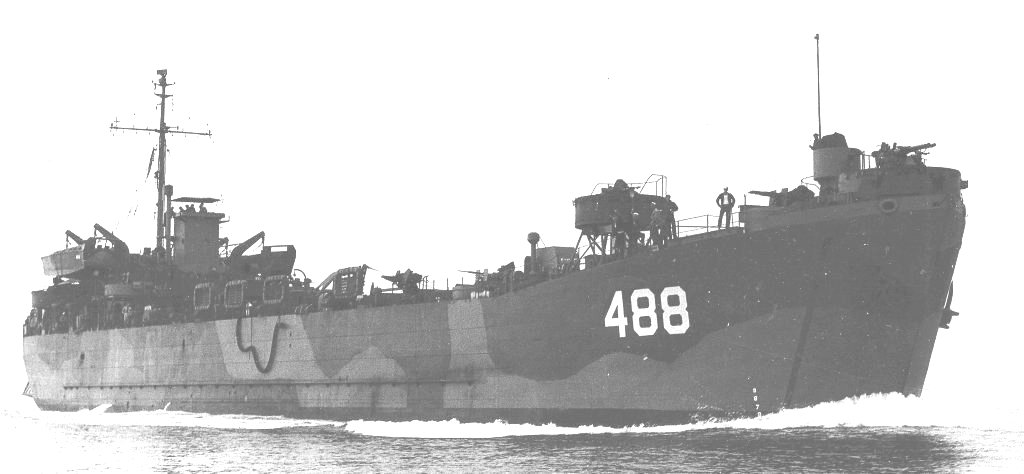







6/13/14
 |
 |
|

Construction of the Lindberg kit for a friend's father
488 was an LST-1 Class Tank Landing Ship:
Laid down, 11 January 1943, at Kaiser, Inc., Richmond, CA.
Launched, 5 March 1943
Commissioned USS LST-488, 24 May 1943, LT. G. E. Scott USNR in command (May 1945)
During World War II USS LST-488 was assigned to the Asiatic-Pacific Theater:
LST Flotilla Five, CAPT. G.B. Carter, USN;
LST Group Fifteen, CDR. V. K. Busck, USN;
LST Division Twenty-Nine and
LST Flotilla Three, CDR. A. A. Ageton USN;
LST Group Seven, LCDR. E. B. Garrigures;
LST Division Thirteen and participated in the following campaigns:
Asiatic-Pacific Campaigns Campaign and Dates Campaign and Dates
Treasury-Bougainville operation
Occupation and defense of Cape Torokina, 6 and 17 November 1943 Leyte operation
Leyte landings, 20 October 1944
Marianas operation
Capture and occupation of Guam, 21 to 28 July 1944 Luzon operation
Lingayen Gulf landings, 4 to 15 January 1945
Redesignated Landing Ship Tank (Hospital) LST(H)-488, 15 September 1945
Following World War II USS LST-488(H) was assigned to Occupation service in the Far East for the following periods:
Navy Occupation Service Medal
17 to 29 October 1945
12 November to 2 December 1945
3 to11 January 1946
Decommissioned, 11 January 1946 and transferred to Commander Naval Forces Far East (COMNAVFE) Shipping Control Authority (SCAJAP), redesignated Q009
Transferred to the Military Sea Transportation Service, 12 March 1952 and placed in service as USNS T-LST-488
Transferred, on lease, to the Philippines, 15 July 1972, named BPR Suriago Del Norte (LT-94)
Sold outright to the Philippines, 5 March 1980
Struck from the Naval Register, date unknown
Final Disposition, fate unknown
USS LST-488 earned four battle stars and the Navy Unit Commendation for World War II service Specifications:
Displacement
1,625 t.(lt)
4,080 t.(fl) (sea-going draft w/1675 ton load)
2,366 t. (beaching displacement)
Length 328' o.a.
Beam 50'
Draft
Speed 11.6 kts. (trial)
Endurance 24,000 miles @ 9kts. while displacing 3960 tons
Complement
Troop Accommodations
Boats 2 LCVP
Cargo Capacity (varied with mission - payloads between 1600 and 1900 tons)
Typical loads
- One Landing Craft Tank (LCT), tanks, wheeled and tracked vehicles, artillery, construction equipment and military supplies.
A ramp or elevator forward allowed vehicles access to tank deck from main deck
Additional capacity included sectional pontoons carried on each side of vessel amidships, to either build Rhino Barges or use as causeways. Married to the bow ramp,
the causeways would enabled payloads to be delivered ashore from deeper water or where a beachhead would not allow the vessel to be grounded forward after ballasting
Armament (varied with availability when each vessel was outfitted. Retro-fitting was accomplished throughout WWII. The ultimate armament design for United States vessels was
Fuel Capacity
Propulsion
Top |
||
 |
 |
